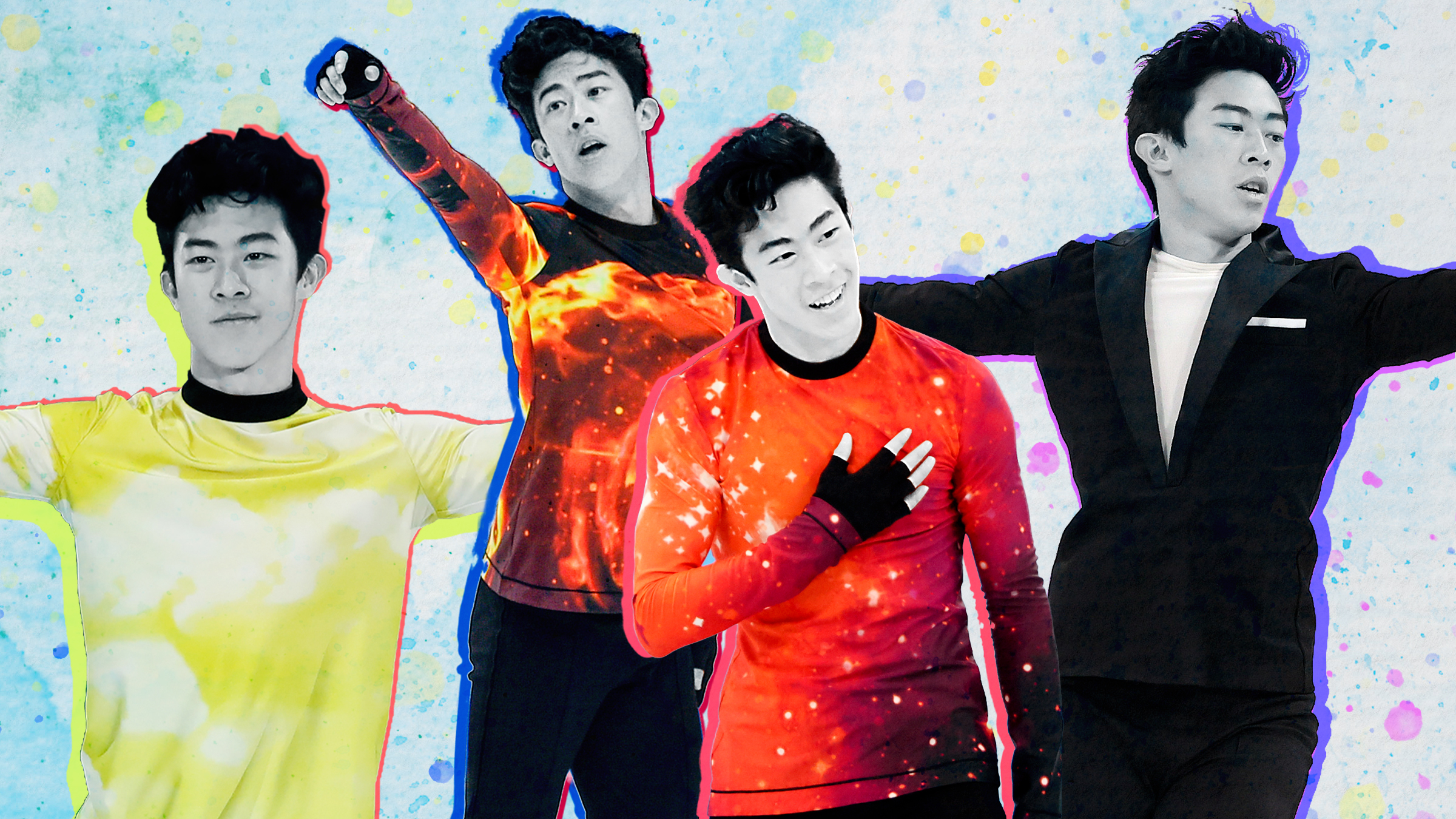
Figure skating is to the Olympics as sequins are to the sport: inseparable.
The figure skating events at the 2022 Beijing Winter Olympics begin even before the opening ceremony, and to the surprise of exactly no one who remembers the Tonya Harding/Nancy Kerrigan showdown, it’s the most popular competition to watch at the Games.
At the Beijing Olympics, five events make up the figure skating competition: Men’s individual, women’s individual, pairs, ice dancing and the team event. Skaters, like gymnasts, are asked to do the near-impossible: Combine athletic prowess with elegance, artistry, and self-expression. But where gymnasts flip and tumble, skaters leap into the air, twisting, turning, and landing on one foot. You’ll see gravity-defying salchows, axels, and toe keeps in the men’s, women’s, and pair competition; ice dancing bans all jumps.
Winter Olympics
Is your head spinning yet? Not to worry. We spoke to Mirai Nagasu, who made history in 2018 when she became the first American woman to land the ultra-difficult triple axel jump in Olympic competition as part of the bronze-winning American Olympic team. We asked Nagasu to weigh in on some of your most googled questions about figure skating — from salchows to stuffed animals.
Related: Why don't figure skaters get dizzy? We asked Olympians
What’s the hardest move in figure skating?
Without hesitation, Nagasu points to the quadruple jump, which was once a rarity but today is nearly ubiquitous — at least among the men.
“Our sport has evolved so much just in the past four years, so even from PyeongChang to Beijing, in Beijing the females will be expected to do quads as well, not just the men,” says Nagasu. “Even on the men’s side, Nathan Chen, who is part of Team USA, has revolutionized the quad.” That’s because he easily performs four in one program.
Get a weekly recap of the latest San Francisco Bay Area housing news. >Sign up for NBC Bay Area’s Housing Deconstructed newsletter.
Why do figure skaters wear tights over skates?
Because skaters can trip over their own laces. And having tights cover the laces removes that potential snafu, which would cost a competitor a medal.
Some skaters also wear tights over skates for the same reason women might wear nude-colored high heels: It creates the illusion of longer legs. Some skaters opt for flesh-toned boot covers instead, which also help to keep laces in place.
Why do figure skaters wear gloves?
Sure, they get cold. But gloves also serve a practical purpose during practice. “When you fall, you sometimes slap the ice. If the ice is beat up, there are chips of ice that will be sticking up and then you can get cut on those. We’re also maneuvering a lot with our blades. Although they’re not sharp, they’re not even as sharp as kitchen knives, with enough force you can cut yourself. So on a regular basis when I’m practicing or falling a lot, I like to wear gloves just to protect my hands,” she says.
Why do figure skaters carry tissues?
Because rinks are cold, and skaters can get runny noses. Tissues save the day. Plus, tears have been known to happen in the "kiss and cry" area after a performance.
Why do figure skaters get stuffed animals after they skate?
Fans shower the ice with stuffed animals after an athlete competes, often to show their appreciation and support. Plus, they don’t melt or fall apart. And every Olympic games has its own mascot, sold as a stuffed animal.
“Well, I actually don’t know why we get stuffed animals. It’s just part of our culture, I guess. People used to throw roses, but roses can get messy and the petals get left behind,” says Nagasu.
Why do figure skaters hit their legs?
To wake up their legs (just like Olympic swimmers) and to remind themselves to focus. “I do it to get my blood going again and especially going into competition, there’s a lot of adrenaline going on, so I like to re-center and refocus myself by waking up my muscles and giving them just a little kickstart,” says Nagasu.
How is figure skating scored?
There’s no margin for error, given the level of skill on display. Skaters are scored on the level of difficulty (base value) of each technical element, coupled with the execution (how well they perform each element). And they accrue points based on how well they skate and their overall performance level.
How do you perform a quad?
Practice, practice, and more practice, coupled with spatial awareness, peak athleticism, and a knowledge of your own body. “You go into a jump with a rotation, but then you stop that rotation so you can snap and rotate up in the air. I would say it’s fun, because as you’re growing up and learning how to skate, you learn single jumps. Then once you feel like those are too easy, you move on to double jumps and then you’re doing two rotations. With the axel, there’s always the forward take off jump, and you do an extra half revolution,” she says.
This story first appeared on TODAY.com. More from TODAY:





